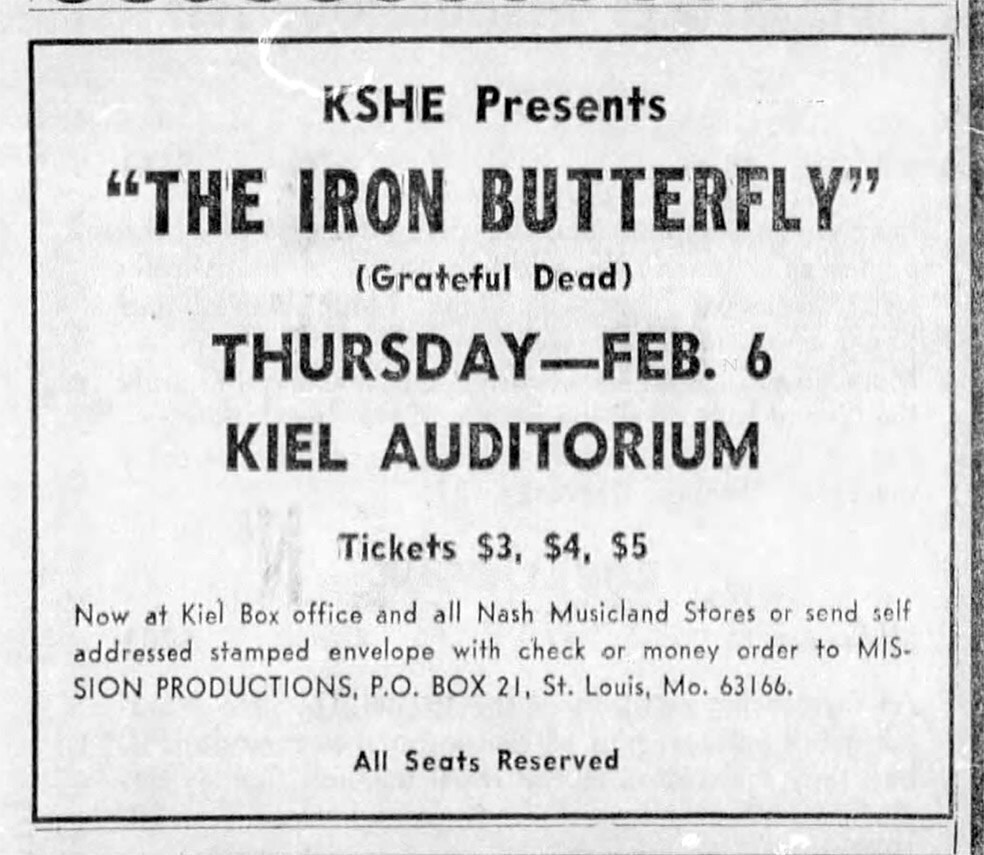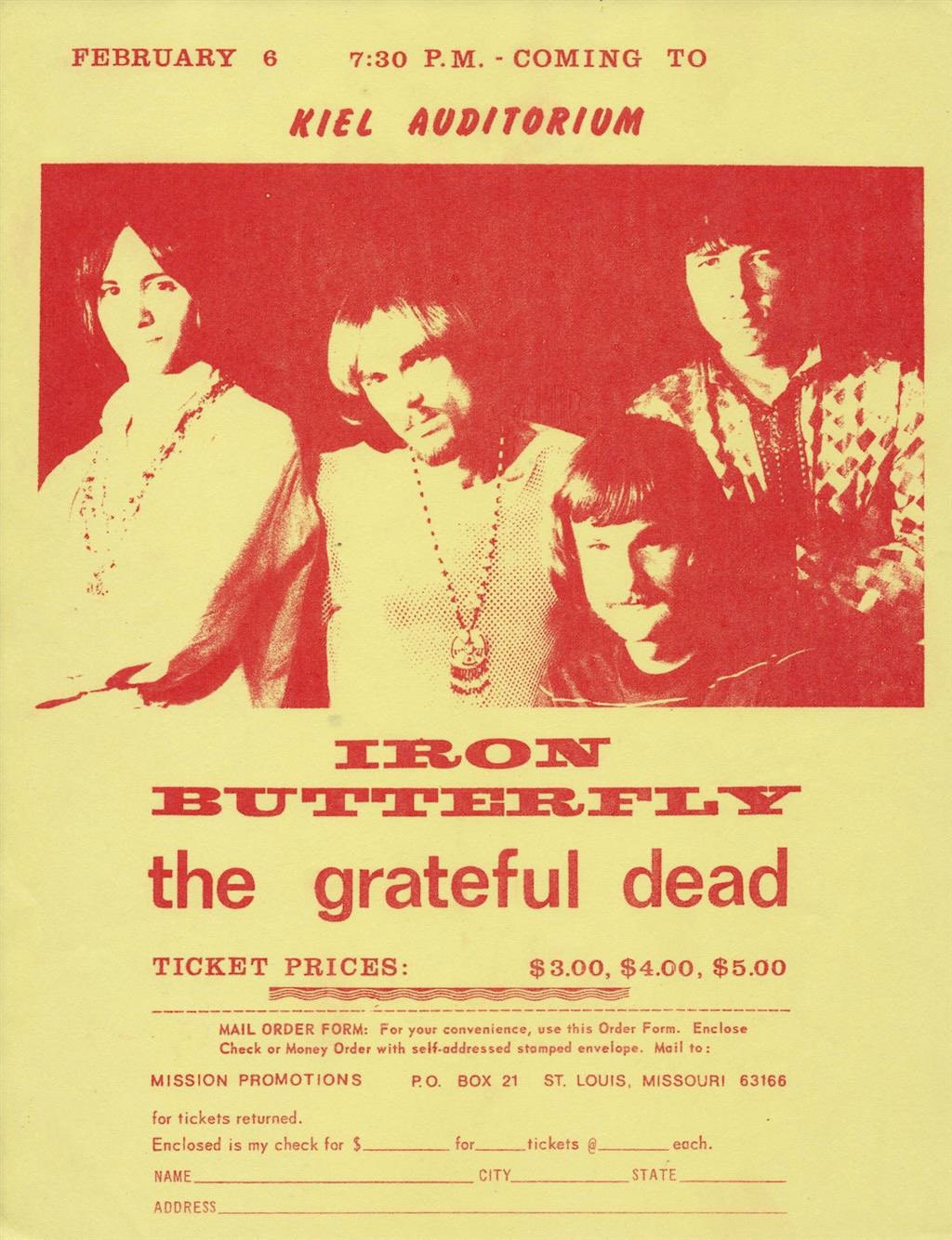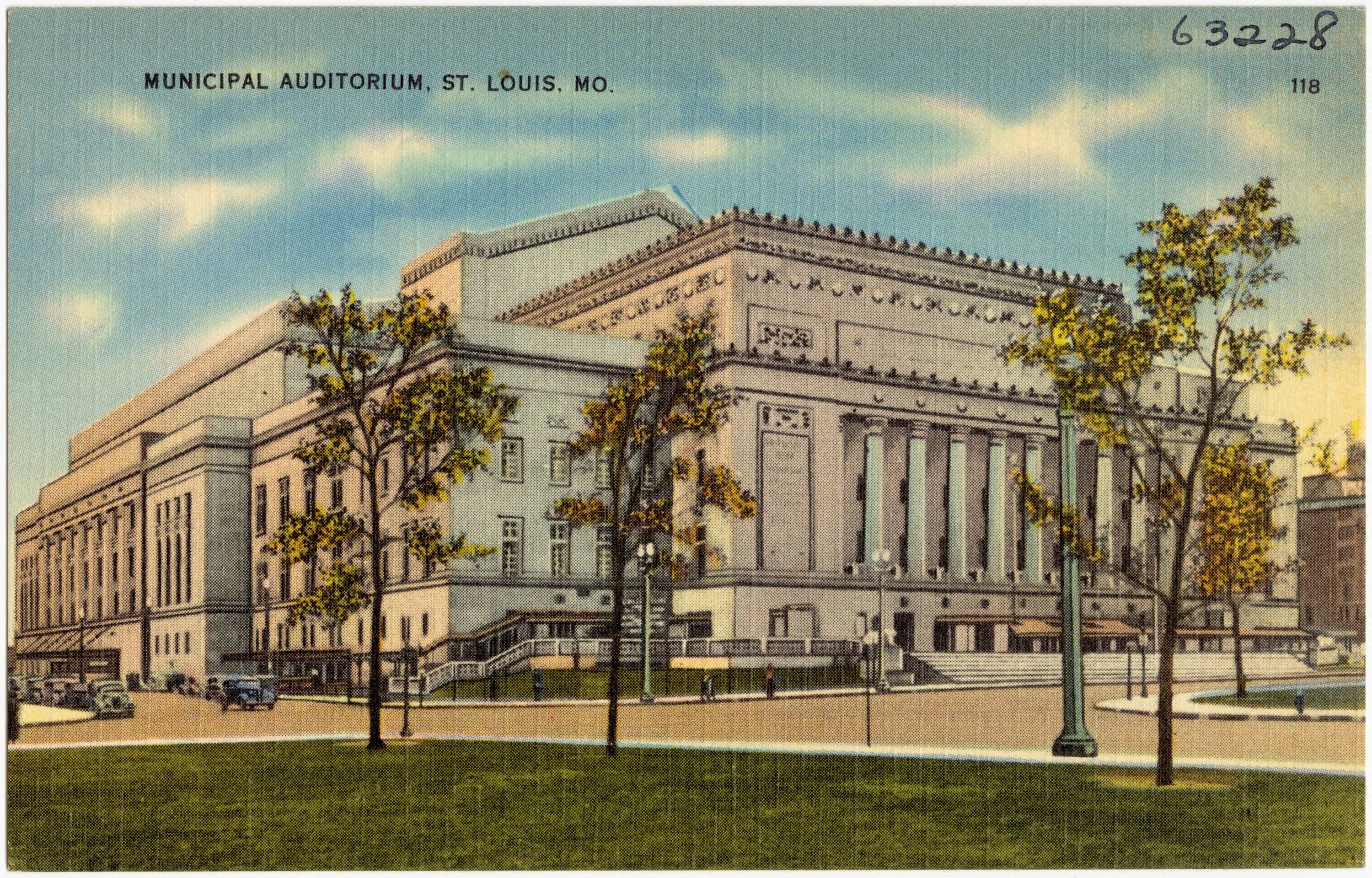Complete Show: Morning Dew , Dark Star > Saint Stephen [1] > The Eleven > Turn On Your Lovelight > Drums > Turn On Your Lovelight , Cryptical Envelopment > Drums > The Other One > Cryptical Envelopment > Feedback > And We Bid You Good Night
[1] Includes William Tell Bridge.
The Dead played overtime at this show because the crowd loved their set so much. They didn't want Iron Butterfly to come on at all, so the Dead played the entire time, and Iron Butterfly apparently didn't go on stage at all.

Weather H 46/ L 41 < Thurday >

February 5, 1969: Soldiers And Sailors Memorial Hall, Kansas City, KS: Iron Butterfly/Grateful Dead
Soldiers And Sailors Memorial Hall was built in 1925, and seats 3500. For bands touring on I-70 as opposed to the more popular I-80, Soldiers And Sailors was a regular stop. On this occasion, Kansas City got a show on a Wednesday night. Iron Butterfly were a big attraction, and so the Grateful Dead opened for them. Kansas City, KS is just across the Missouri river and smaller than Kansas City, MO.

It's typical to make fun of Iron Butterfly today, as their music hasn't aged all that gracefully. They were a San Diego band who moved to Los Angeles in 1967. Their second album, In-A-Gadda-Da-Vida, released in June 1968, was huge. The single of the same name was a pretty big hit, too. Although the album only reached #4, it kept selling, seemingly forever. In fact, in 1976, the Platinum Album (for 1 million units sold) was invented so that Atlantic Records could award it to Iron Butterfly.
Whatever you think of "In-A-Gadda-Da-Vida" and its fuzztone organ riff, Iron Butterfly were very important in rock history. The Iron Butterfly unequivocally showed record companies that 'heavy' rock music could ship massive numbers of albums, even if they didn't fit the conventional constraints of pop music. Companies like Warner Brothers were willing to bet on groups like The Grateful Dead in the hopes that they might have the next Iron Butterfly on their hands. Supposedly, In-A Gadda-Da-Vida was the all-time best selling album on Atlantic, until it was finally passed by Led Zeppelin IV. The album has sold 30 million copies.
Atlantic Records had released Iron Butterfly's successor album to In-A-Gadda-Da-Vida in late January of 1969. The album, Ball, actually peaked at #3, but sales died off afterwards. At this time, the Iron Butterfly were Erik Brann (lead guitar), Doug Ingle (organ, vocals), Lee Dorman (bass) and Ron Bushy (drums).
According to Tom Constanten, in my old copy of The Tapers Compendium, TC had to use Iron Butterfly's organ this night. It was a stand-up organ, and Constanten found it pretty unfamiliar. No explanation was given for this. Perhaps this may have been one of those nights where the Hammond organ was repossessed. The organ arrangement would explain Owsley's snippy remark that he had to help the Butterfly's marginally competent roadies. Maybe the Dead traded some technical help for a chance to use the organ? #lostlivedead

February 6, 1969: Kiel Auditorium, St. Louis, MO: Iron Butterfly/Grateful Dead
The Grateful Dead opened for Iron Butterfly the following night as well, playing on a Thursday night at the Kiel Auditorium in St. Louis, a few hundred miles to the East on I-70. The Kiel Auditorium was built in 1934, and seated up to 9,300. It was located at 1401 Clark Avenue, an address that also included the much smaller Kiel Opera House, where the Dead would headline 18 months later. 9,300 capacity was pretty large for the 1960s, so a popular band like the Butterfly was needed to make sure that the concert made financial sense.
I don't know whether Constanten had to use Iron Butterfly's organ again. Perhaps after getting paid the night before, the Dead were able to reclaim their Hammond. In the ways of touring rock bands in the 60s, the groups went in opposite directions after this night. Iron Butterfly returned to the West and home, stopping off on Friday night (February 7) to play Denver with Steve Miller and Alice Cooper. The Dead continued eastward, and headed to their show the next night in Pittsburgh. The 600 mile drive would be pretty daunting, and ill-advised in the Winter, so I have to assume that the Dead and their equipment mostly traveled by plane for this tour. #LostLiveDead

